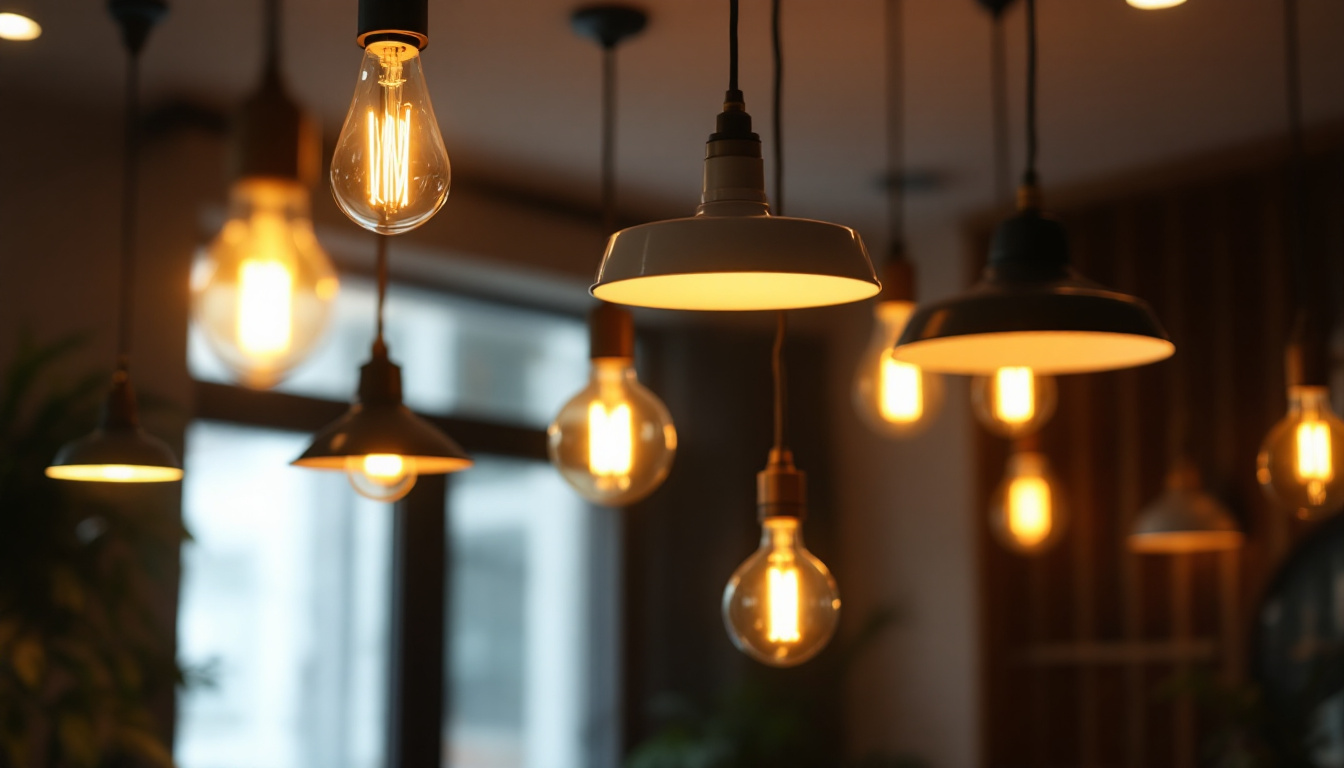
In the realm of modern lighting solutions, the importance of electrical outlets cannot be overstated. These seemingly simple components are fundamental to the functionality and versatility of lighting systems in both residential and commercial spaces. Understanding the role of electrical outlets, particularly in the context of lighting, is essential for lighting contractors aiming to provide comprehensive solutions to their clients.
Electrical outlets have undergone significant transformations over the years. From the basic two-prong designs of the past to today’s more sophisticated and multifunctional outlets, the evolution reflects the changing needs of modern society. As technology advances, so does the demand for more efficient and versatile electrical solutions.
Initially, electrical outlets were designed to serve a singular purpose: to provide power to electrical devices. However, as the demand for lighting solutions grew, so did the complexity of these outlets. The introduction of three-prong outlets marked a pivotal moment, allowing for safer and more reliable connections for lighting fixtures and other electrical devices. This development was crucial during the early 20th century when households began to adopt electricity on a larger scale, leading to a surge in the number of electrical appliances and the need for more robust safety standards.
As the years progressed, the design of electrical outlets continued to evolve. The mid-20th century saw the introduction of polarized outlets, which ensured that electrical devices were connected in a way that reduced the risk of electrical shock. This innovation was particularly important as more households began to utilize appliances with higher power demands, necessitating a focus on safety and efficiency. The gradual shift towards standardized outlet designs across different regions also played a significant role in ensuring compatibility and safety in electrical installations.
Today, electrical outlets are equipped with various features that enhance their functionality. Smart outlets, for instance, allow for remote control and automation of lighting systems, enabling users to manage their environments with ease. These innovations not only improve convenience but also contribute to energy efficiency, a critical consideration in modern lighting design. With the rise of the Internet of Things (IoT), many outlets now integrate seamlessly with home automation systems, allowing users to control lighting and appliances from their smartphones or voice-activated devices.
Moreover, the introduction of USB charging ports directly into outlets has revolutionized the way we power our devices. No longer do we need to search for adapters or rely on bulky chargers; modern outlets can accommodate multiple devices simultaneously, catering to the needs of our increasingly digital lifestyles. This trend reflects a broader shift towards multifunctionality in home design, where space-saving and convenience are paramount. As we look to the future, the potential for further innovations—such as wireless charging capabilities and energy monitoring features—promises to keep electrical outlets at the forefront of technological advancement.
For lighting contractors, understanding the role of electrical outlets in lighting design is crucial. They serve as the backbone of any lighting system, influencing both the aesthetic and functional aspects of a space. The strategic placement and selection of outlets can significantly impact the overall effectiveness of lighting solutions.
Electrical outlets provide the necessary infrastructure for versatile lighting solutions. They allow for the integration of various types of lighting fixtures, from ambient to task lighting. By strategically placing outlets, contractors can create layered lighting designs that enhance the functionality and ambiance of a space. For instance, in a home office, having outlets positioned near desks can facilitate the use of desk lamps and task lights, ensuring that the workspace is well-lit without causing glare on screens. This thoughtful placement not only improves productivity but also contributes to the overall comfort of the user.
As smart home technologies gain traction, the role of electrical outlets becomes even more pronounced. Smart outlets enable the seamless integration of smart lighting systems, allowing users to control their lighting through apps or voice commands. This level of control not only enhances user experience but also promotes energy conservation, aligning with modern sustainability goals. Furthermore, the ability to program lighting schedules or adjust brightness levels remotely can lead to significant energy savings over time. For example, homeowners can set their outdoor lights to turn on at dusk and off at dawn, ensuring safety while minimizing unnecessary energy consumption. This integration of technology not only modernizes a space but also offers convenience and peace of mind for users.
In addition to aesthetic and functional benefits, the thoughtful placement of electrical outlets plays a critical role in enhancing safety and accessibility within a space. Properly installed outlets can reduce the risk of tripping hazards by minimizing the need for extension cords, which can clutter walkways and create dangerous situations. Moreover, ensuring that outlets are easily accessible can empower individuals with mobility challenges, allowing them to control their lighting without assistance. For instance, installing outlets at a height that is reachable for everyone, including children and those in wheelchairs, fosters an inclusive environment. This consideration of safety and accessibility not only meets building codes but also reflects a commitment to creating spaces that are welcoming and functional for all users.
Understanding the different types of electrical outlets and their specific applications is essential for lighting contractors. Each type serves a unique purpose and can be utilized in various lighting scenarios to optimize performance and safety.
Standard electrical outlets, typically rated for 15 or 20 amps, are the most common type used in residential and commercial settings. They are suitable for a wide range of lighting fixtures and can accommodate various bulbs and technologies. However, it is essential to ensure that the outlet’s rating matches the requirements of the lighting system to prevent overloads.
Ground Fault Circuit Interrupter (GFCI) outlets are designed to protect against electrical shocks, making them ideal for areas prone to moisture, such as kitchens and bathrooms. In lighting design, GFCI outlets are crucial for outdoor lighting applications, ensuring safety while providing illumination in potentially hazardous environments.
Smart outlets represent the forefront of electrical outlet technology. They allow for remote control and automation of lighting systems, making them a valuable addition to modern lighting design. By integrating smart outlets, contractors can offer clients enhanced control over their lighting environments, contributing to both convenience and energy efficiency.
The placement of electrical outlets is a critical aspect of lighting design. Properly positioned outlets can enhance the functionality and aesthetic appeal of a space, while poor placement can lead to frustration and inefficiency. Here are some key considerations for contractors when planning outlet placement.
Before determining outlet placement, it is essential to understand the layout of the room. Factors such as furniture arrangement, architectural features, and intended use of the space should all be taken into account. For example, in a living room, outlets should be positioned near seating areas to facilitate the use of table lamps and other lighting fixtures.
Accessibility is another critical factor in outlet placement. Outlets should be easily reachable for users, allowing for convenient connection of lighting fixtures. Additionally, safety considerations must be prioritized. Outlets should be installed away from water sources and in locations that minimize the risk of tripping hazards from cords and cables.
Integrating electrical outlets with lighting controls is a vital aspect of modern lighting solutions. This integration enhances user experience and allows for greater flexibility in managing lighting systems. Various control options can be utilized to create a cohesive and functional lighting environment.
Dimmer switches are a popular choice for controlling lighting intensity. When paired with electrical outlets, they allow users to adjust the brightness of their lighting fixtures according to their preferences. This integration not only enhances the ambiance of a space but also contributes to energy savings by allowing users to reduce light levels when full brightness is not needed.
Wireless control systems have revolutionized the way lighting is managed. By integrating electrical outlets with wireless controls, contractors can offer clients a seamless and user-friendly experience. These systems allow for remote management of lighting, enabling users to create schedules, adjust settings, and even control lighting from their smartphones.
The future of electrical outlets and lighting solutions is poised for exciting developments. As technology continues to advance, several trends are emerging that will shape the landscape of electrical outlets and their role in lighting design.
With growing awareness of environmental issues, there is an increasing focus on sustainability in lighting design. Electrical outlets will play a crucial role in supporting energy-efficient lighting solutions, such as LED technology and smart lighting systems. As contractors embrace sustainable practices, the integration of energy-efficient outlets will become a standard consideration in lighting design.
The trend toward enhanced connectivity will continue to influence the development of electrical outlets. As smart home technologies become more prevalent, outlets will increasingly feature built-in connectivity options, allowing for seamless integration with other smart devices. This trend will enable contractors to create more sophisticated lighting solutions that cater to the evolving needs of consumers.
In conclusion, electrical outlets play a pivotal role in modern lighting solutions. Their evolution from basic power sources to multifunctional components reflects the changing demands of contemporary society. For lighting contractors, understanding the various types of outlets, their applications, and the importance of strategic placement is essential for delivering effective lighting solutions.
As technology advances, the integration of smart outlets and enhanced connectivity will further enhance the functionality and efficiency of lighting systems. By staying informed about emerging trends and innovations, contractors can ensure that they provide clients with cutting-edge lighting solutions that meet their needs and preferences.
Ultimately, the role of electrical outlets in modern lighting solutions is multifaceted and significant. By recognizing their importance and leveraging their capabilities, lighting contractors can create environments that are not only aesthetically pleasing but also functional and energy-efficient.
Ready to elevate your lighting projects with the latest in electrical outlet technology and smart lighting solutions? Look no further than LumenWholesale. We provide contractors with superior, spec-grade lighting products at unbeatable wholesale prices. Our extensive selection not only meets but exceeds industry standards, ensuring you have access to reliable and high-performance lighting for every project. Plus, with free shipping on bulk orders, you can get premium lighting at the best value without any hidden fees or compromises. Don’t miss out on the perfect combination of quality, affordability, and convenience. Discover the difference with LumenWholesale by visiting our collection today at Wholesale Lighting at the Best Value.

Discover how plug-in recessed lighting can transform your home’s energy efficiency.

Discover how solar lantern light posts are revolutionizing the work of lighting contractors by offering sustainable, cost-effective, and versatile solutions for outdoor projects.

Discover the ins and outs of halogen light fixtures with our comprehensive guide tailored for lighting contractors.

Discover how decorative light bulbs can transform your space while ensuring longevity and adaptability in your lighting projects.